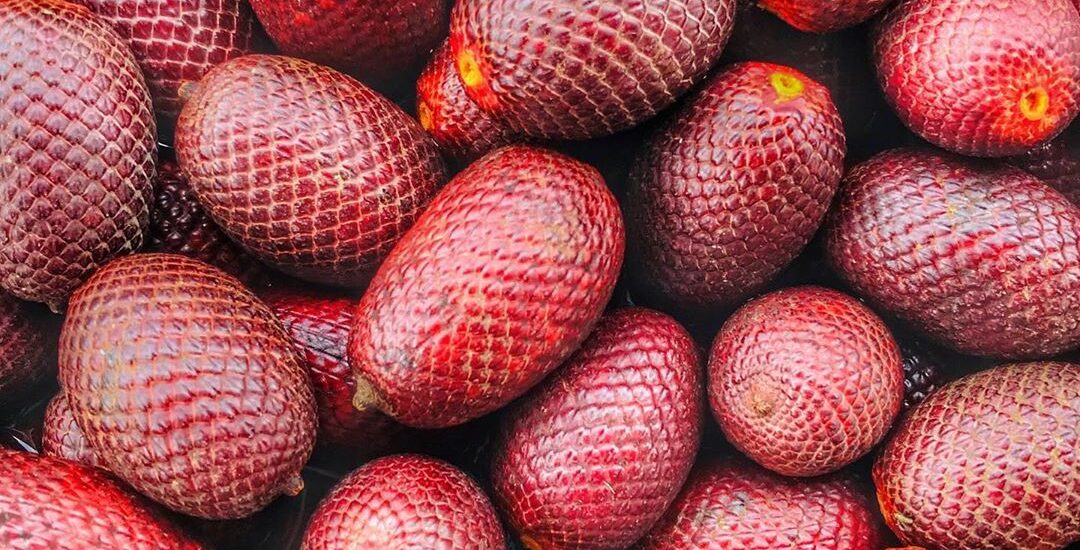Peru is one of the world’s most biodiverse countries, with delicious fruits that will surprise and please you! Whether you want something sweet, tart, or refreshing to drink or eat, Peru’s native fruits have delicious flavors and significant health benefits.
You can consume these fruits strained and sometimes diluted with water, we assure you you’ll love them all!. Let’s embark on a trip through the world of Peruvian fruits, tasting the different flavors that our wonderful country has to offer!
Lucuma
“The last gold of the Incas” is an Andean valley fruit, but it also grows in coastal areas. It is similar to the egg fruit, but Lucuma’s bright yellow color is appealing, and its texture is like a sweet potato, while its flavor is sweet, like custard or maple syrup. You can eat it raw, lúcuma is a common flavor in ice cream or juice. You MUST try Lucuma juice with milk, it’s one of the best things that you can try in your life.
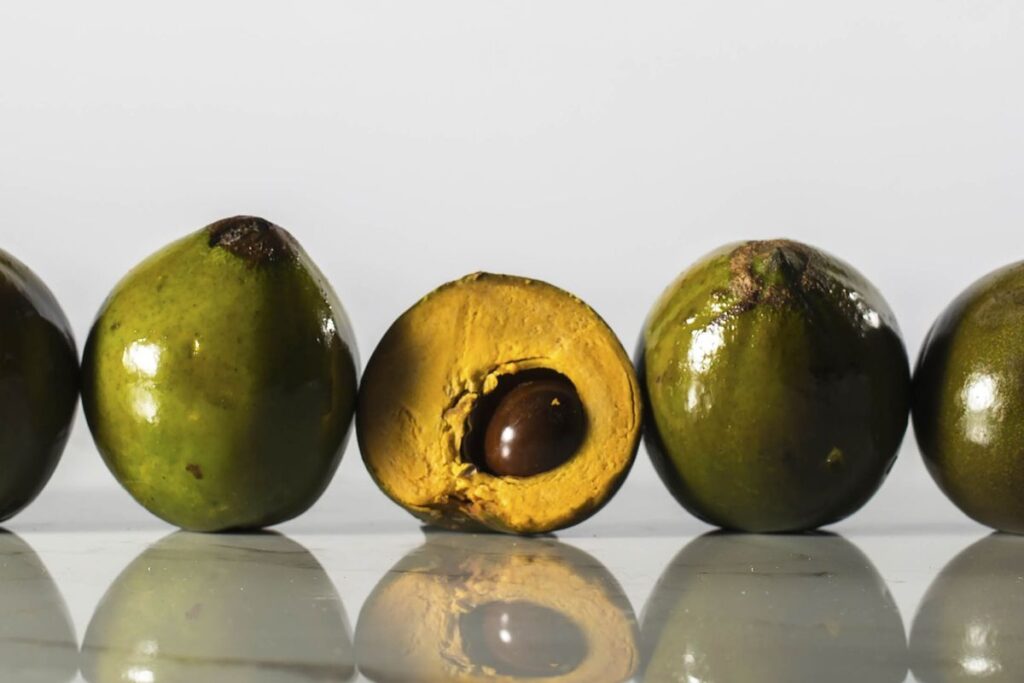
Health Properties
Lucuma is high in fiber and antioxidants. It has essential vitamins, like B3, B5, and C. It supports digestion, skin, and energy, making it a great option for those managing blood sugar levels.
Aguaje
This fruit grows on the tall and graceful palm tree, mainly in the Amazon rainforest area. It has an oval shape with sturdy, fibrous brown skin. When you cut into it, you’ll find a vibrant orange pulp that is soft and fibrous. Aguaje is packed with vitamins A, C, and E, making it a wonderful source of essential fatty acids. In Amazon cuisine, aguaje shines many dishes as well as refreshing drinks, tasty desserts, and tasty meals.
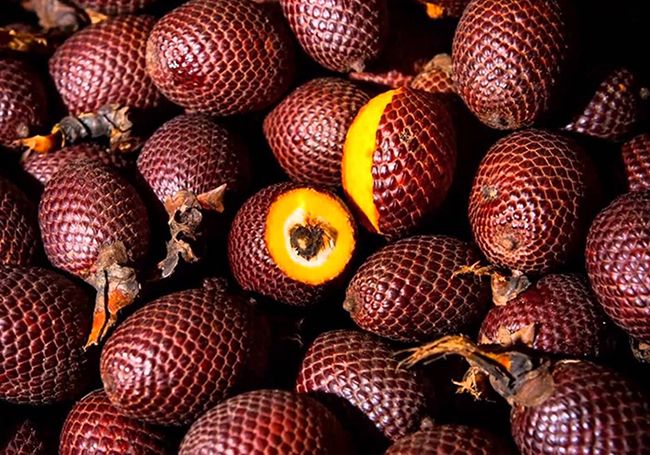
Health Properties
Aguaje is rich in antioxidants, which protect cells and may reduce the risk of chronic diseases like cancer and heart disease. Aguaje contains natural phytoestrogens that help balance hormones, particularly for menopausal women, and may lower certain cancer risks
Cocona
Cocona is another fruit from the Amazon rainforest. This delicious fruit from the Peruvian Amazon has a tangy taste and a conical or rounded shape, resembling a tomato. It has soft skin and thick, watery pulp with a light yellow color and acidic flavor. Although it’s sour to eat, locals consume it in juices, drinks, or hot sauces for lunch.
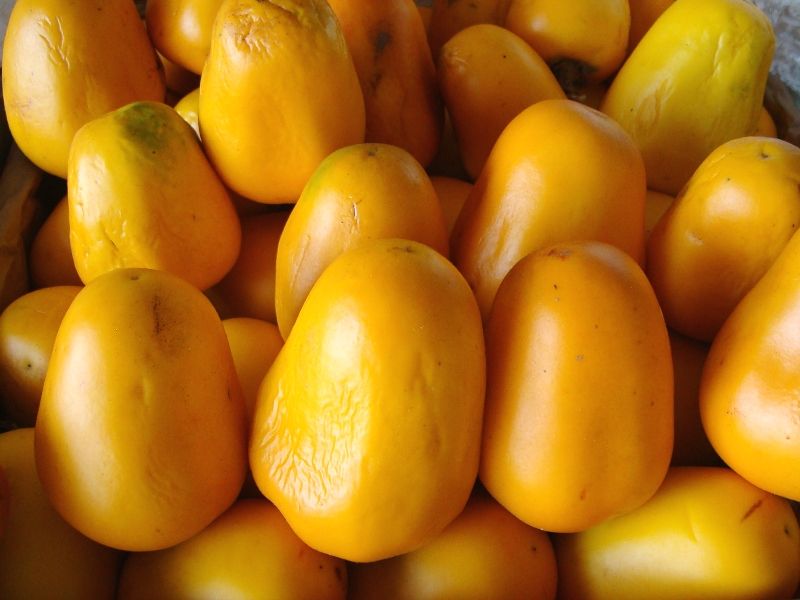
Health Properties
This plant is great for health! It can help with many issues like burns, diabetes, and skin infections. It also works well to lower uric acid and cholesterol levels. This is all thanks to its high levels of vitamins and antioxidants.
Chirimoya
Also called custard apple, it was the favorite fruit of American renowned writer, Mark Twain, who called Chirimoya “the most delicious fruit that men know.” This fruit is a true treasure of Peru, loved for centuries, and even featured in Mochica ceramic art.
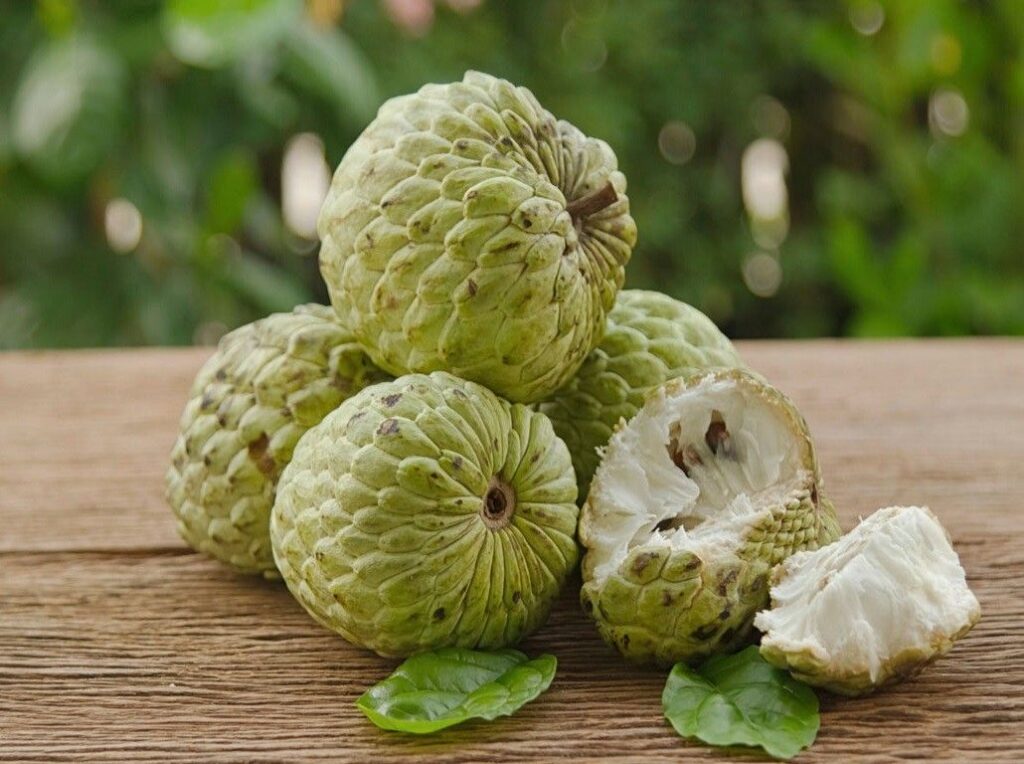
Health Benefits
Chirimoya is a wonderful fruit packed with vitamins, nutrients, and antioxidants. It helps support heart health and boosts your immune system while also aiding digestion. Plus, it has antioxidants that can protect your cells and help slow down the aging process. Enjoying chirimoya can be a tasty way to take care of your health!
Pepino Dulce
The “sweet cucumber” is an amazing fruit from the Andes that has been loved for centuries. Recently, it has begun to attract attention around the world for its delicious flavor and health benefits. Also known as “mother-in-law” or “sister-in-law,” this oval fruit is about 8 to 10 centimeters long.
When ripe, it shines with a lovely golden color and purple streaks. It makes a beautiful addition to any market. People often enjoy the pepino dulce in salads, but it’s good to remember some traditional advice from northern Peru. As a measure, don’t eat it after spending time in the sun, as this could upset your stomach.
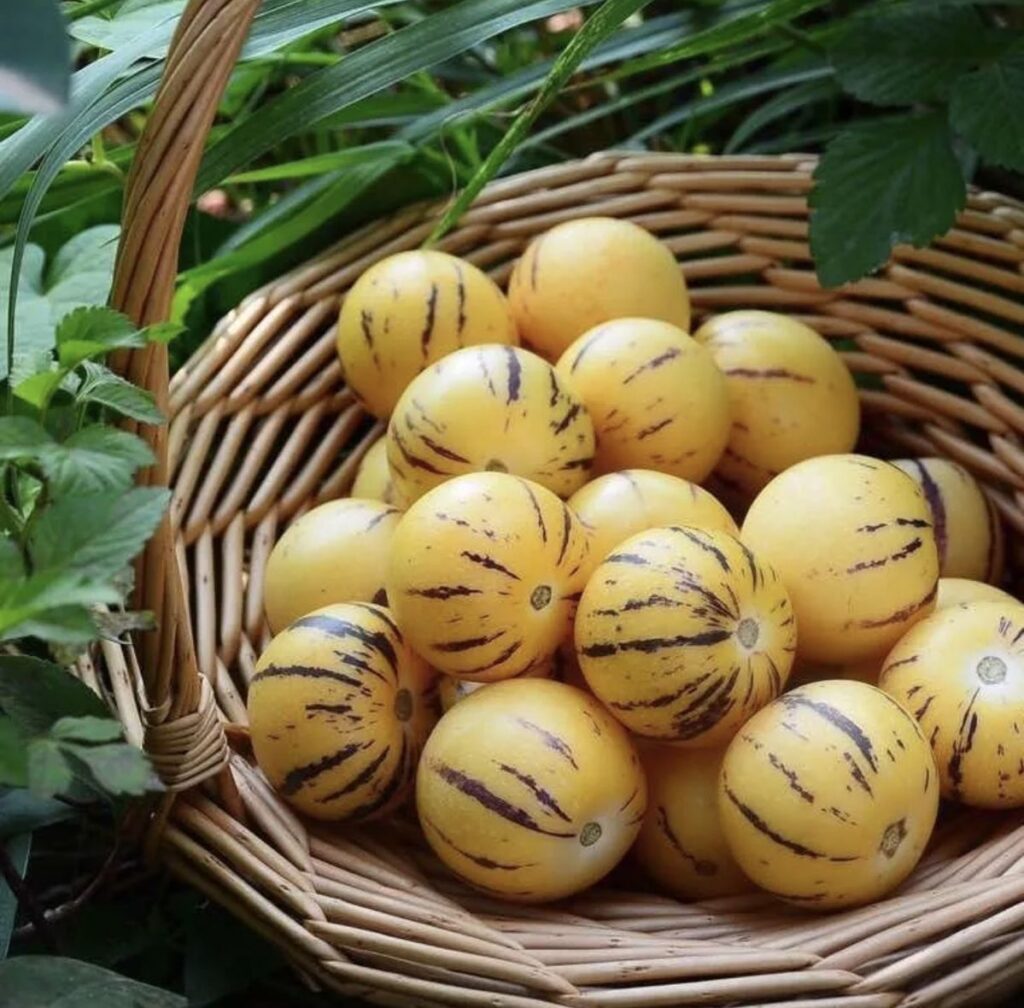
Health Benefits
This fruit is full of vitamin C! It helps regulate glucose levels and acts as a natural diuretic, which can be great for our health. It’s a great source of vitamins A, B, C, and K. It also has important minerals like iron, zinc, copper, manganese, calcium, potassium, and phosphorus. Enjoying pepino dulce can be a delicious way to boost your nutrition!
Tumbo
The “tumbo”, or “banana passionfruit,” is an acid fruit that comes from the highland jungles of the Andes. It resembles the granadilla, with edible seeds, giving it a refreshing sweet and sour taste. People love to eat it raw as a snack, and it can also enhance cocktails, juices, and jams.
The tumbo is a passion fruit close relative, but its shape is more like a small banana. shape makes it unique, and it is especially popular as a thirst-quenching juice in the beautiful Andean valleys.
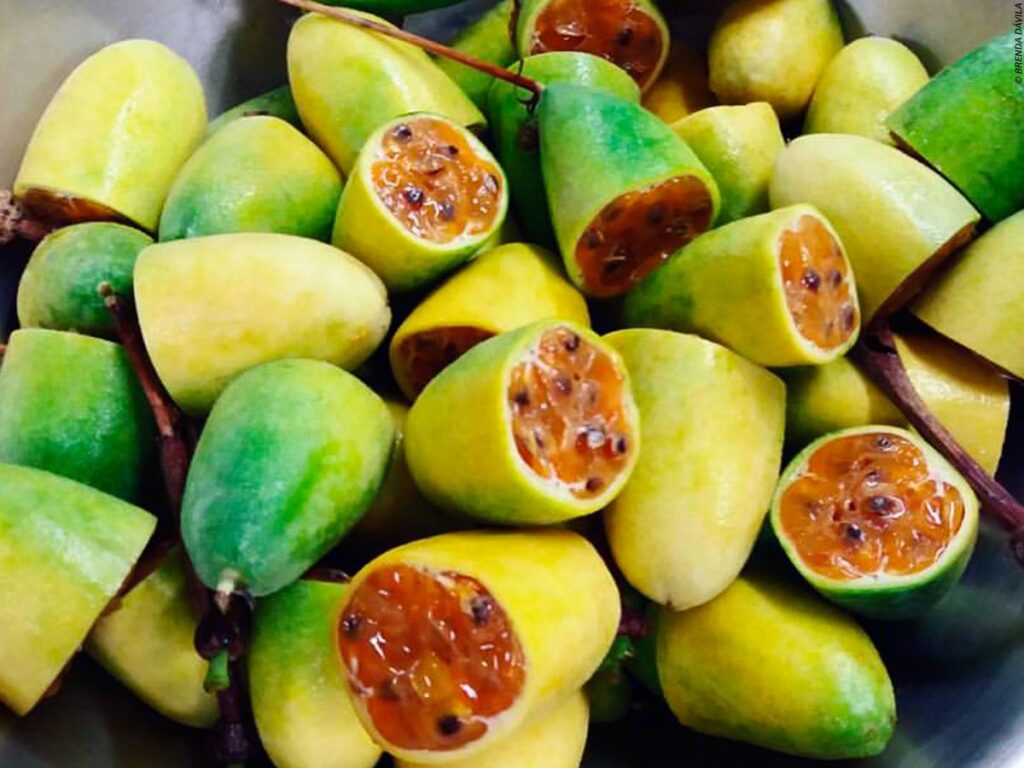
Health Benefits
Tumbo is packed with positive effects on your health. It’s great for your immune system and helps heal cuts and bruises. It also has vitamin A, which is good for your eyesight and keeps your skin glowing. Tumbo has fiber, too, which helps with digestion and keeps your tummy happy.
Sanki
Sanki is a small, green fruit that looks a bit like a cactus fruit. It grows in the Andes mountains and has a spiky, greenish-yellow skin. Inside, it has a sour, juicy pulp, which can be a little tangy but very refreshing. People in the Andes often eat it fresh or make it into juice.
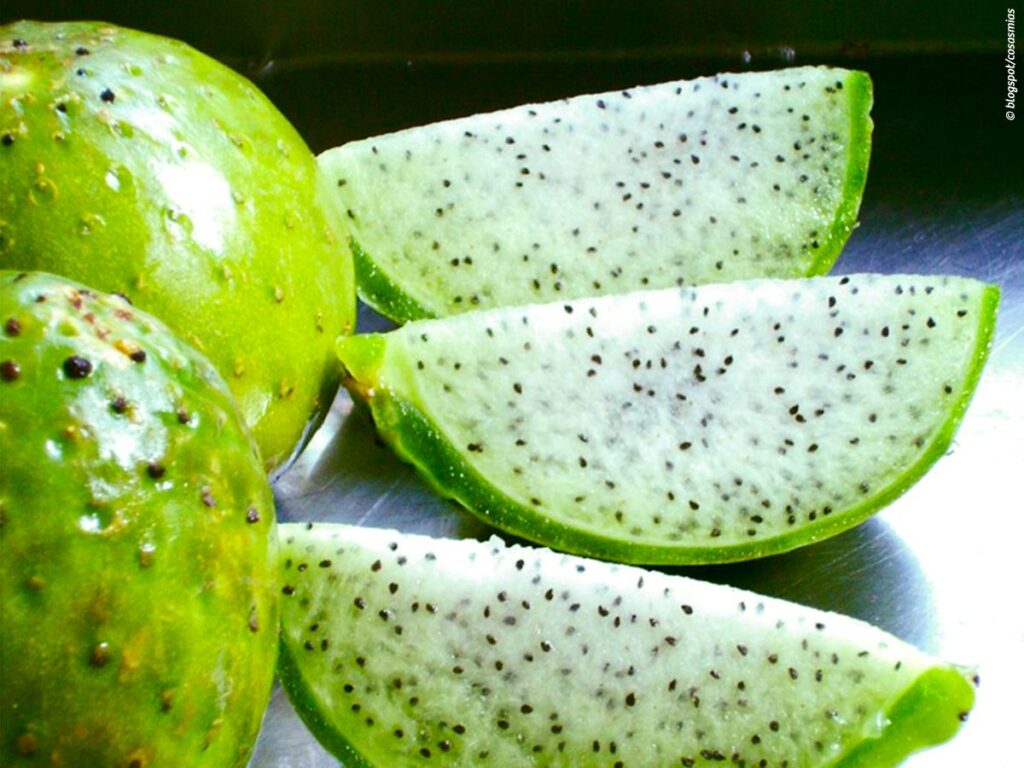
Health Benefits
Sanki is a wonderful fruit that offers many health benefits! It’s full of vitamin C, which can help you ward off colds and support your health. Plus, it contains antioxidants that protect your cells and help keep your skin looking fresh and vibrant. Sanki has important minerals like calcium and iron. They strengthen bones and boost energy. This little fruit is a fantastic choice to help you feel strong and lively!
Aguaymanto
This small, round, bright orange fruit, covered by a papery husk receives other names like goldenberry, inca berry, or Pichu berry. The inca royalty used to appreciate this fruit thanks to its acid and sweet flavor. If you peel it, it’ll reveal the juicy berry inside. The taste is a mix of sweet and tart, similar to a cherry tomato but fruitier. Aguaymanto has become versatile in juices, desserts, and jams.
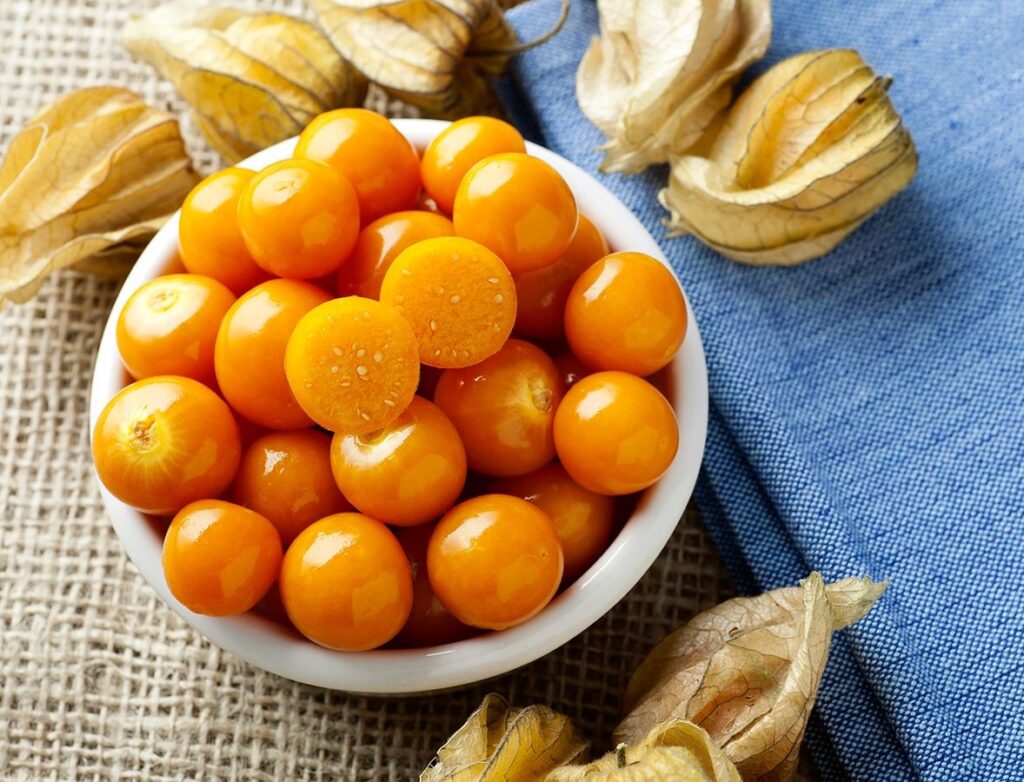
Health Benefits
Aguaymanto is high in vitamins A and C, both of which are excellent for your immune system, skin, and vision. It’s also a great source of antioxidants, which help fight off harmful substances in your body and keep your cells healthy. Aguaymanto contains fiber, too, which helps with digestion. This tiny, tasty berry is also low in calories, so you can enjoy it as a guilt-free snack!
If you can get these fruits in your country, we encourage you to eat them or that make part of your diet, your body and health will thank you later. If you can’t get these fruits, why don’t you come to visit the place where you can find them!
Remember that in Peru, you can travel with Viagens Machu Picchu. We’re a reputable travel agency that operates around all of Peru. Contact us to take the first step to know the land of exotic and healthy fruits, Peru
Viagens Machu Picchu, journeys that inspire, moments that last.

